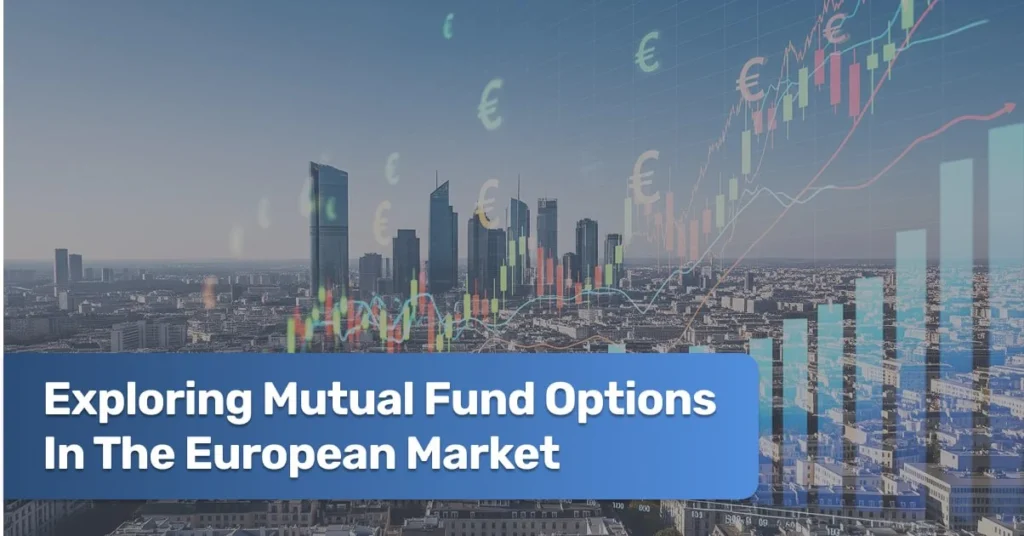Mutual funds have long been a popular investment vehicle for individuals seeking diversification, professional management, and relatively low investment barriers. In the European market, mutual funds have become a core component of many investors’ portfolios due to their ability to cater to a wide range of investment goals and risk appetites. The European Union (EU) offers a robust regulatory framework, making mutual fund investing both accessible and safe for retail investors.
In this article, we will dive deep into the various mutual fund options available in the European market, exploring their key benefits, different types of funds, popular investment strategies, and how you can make the most of your mutual fund investments. Whether you are new to mutual funds or looking to refine your strategy, this guide will provide valuable insights to help you navigate the European investment landscape.
Understanding Mutual Funds in Europe
A mutual fund is a pooled investment vehicle where multiple investors contribute funds to be managed by a professional portfolio manager. The manager invests the pooled capital in a diversified portfolio of stocks, bonds, or other assets based on the fund’s investment objectives. The primary goal of mutual funds is to offer investors diversification, reducing the risk of relying on a single asset or market.
In Europe, mutual funds are governed by various regulations that aim to protect investors. The Undertakings for Collective Investment in Transferable Securities (UCITS) is one of the most prominent regulatory frameworks in Europe, providing a level of security and transparency that has made UCITS funds highly attractive to both European and global investors.
Why Invest in Mutual Funds in Europe?
Investing in mutual funds offers a range of advantages that appeal to both novice and seasoned investors alike:
Diversification
One of the primary benefits of mutual funds is diversification. By pooling money with other investors, mutual funds give individuals access to a broader range of assets than they would typically be able to afford on their own. This diversification helps to mitigate risk, as the performance of a mutual fund is not dependent on any single security.
Professional Management
Mutual funds are managed by professional fund managers, who make decisions based on extensive research and market analysis. This is ideal for individuals who may not have the time or expertise to manage their own investments. Fund managers are tasked with actively selecting and managing the fund’s assets, ensuring that the goals of the fund and strategies are met.
Accessibility and Liquidity
Mutual funds are generally easy to access, with low minimum investment requirements. This makes them an excellent choice for both small and large investors. Additionally, mutual funds are typically liquid, meaning investors can redeem their shares at the current net asset value (NAV) on any business day, offering flexibility in managing your investment.
Regulated and Transparent
The UCITS framework, which governs most mutual funds in the European market, ensures that funds adhere to strict transparency, reporting, and governance standards. These regulations provide a level of security, ensuring that the funds operate in the best interest of investors.
Tax Efficiency
Depending on the type of mutual fund and the investor’s country of residence, mutual funds in Europe may offer tax advantages. For example, some funds may be tax-efficient in terms of dividends and capital gains. Furthermore, certain funds may be eligible for tax relief schemes available to long-term investors.
Types of Mutual Funds in the European Market
There are several types of mutual funds in the European market, each offering unique investment strategies and risk profiles. Here are some of the most popular options:
Equity Mutual Funds
Equity mutual funds invest primarily in stocks or shares of companies. These funds can be regionally focused, such as European equity funds, or globally diversified. The goal of equity funds is to provide capital appreciation through the growth of the underlying stocks. Investors should be prepared for higher volatility and risk with these funds, but they also offer the potential for higher returns.
Popular Example:
- European Growth Funds: These funds invest in growing companies within Europe, aiming for capital appreciation as European economies expand.
Bond Mutual Funds
Bond mutual funds invest in fixed-income securities, such as government bonds, corporate bonds, or municipal bonds. These funds are generally less risky than equity funds, but they offer lower potential returns. They are ideal for conservative investors looking for stability and regular income in the form of interest payments.
Popular Example:
- Euro Government Bond Funds: These funds focus on bonds issued by European governments, such as those of Germany, France, and Italy.
Balanced Funds
Balanced mutual funds aim to combine the best of both equity and bond funds by investing in a mix of stocks and fixed-income securities. The primary objective of these funds is to provide moderate growth while minimizing risk. They are suitable for investors who want diversification without taking on the high volatility associated with equity-only funds.
Popular Example:
- European Balanced Funds: These funds invest across a variety of European stocks and bonds, aiming to provide steady returns through both capital appreciation and income.
Sector-Specific Funds
Sector-specific mutual funds focus on specific industries or sectors, such as technology, healthcare, energy, or financials. These funds are more concentrated and, as a result, can be riskier. However, they offer the opportunity for higher returns if the targeted sector performs well.
Popular Example:
- European Technology Funds: These funds invest in the European technology sector, focusing on companies involved in software, hardware, and innovation.
Index Funds
Index mutual funds aim to replicate the performance of a specific market index, such as the Euro Stoxx 50 or the FTSE 100. These funds are passively managed and typically have lower fees than actively managed funds. Index funds are ideal for investors who want broad exposure to the market without paying for active management.
Popular Example:
- Euro Stoxx 50 Index Funds: These funds track the performance of the 50 largest companies in the Eurozone.
ESG Funds
Environmental, Social, and Governance (ESG) mutual funds focus on investments that meet certain ethical, social, and environmental standards. Investors in ESG funds seek to invest in companies that prioritize sustainability and responsible governance practices, aligning with their values.
Popular Example:
- European ESG Funds: These funds focus on companies in Europe that score highly on ESG criteria, including those working toward environmental sustainability and social responsibility.
How to Choose the Right Mutual Fund in Europe
When choosing a mutual fund in the European market, it is important to consider several key factors:
Investment Goals and Risk Tolerance
Your investment objectives will largely determine the type of mutual fund that best suits your needs. For example, if you are looking for long-term growth and can tolerate higher risk, equity funds or sector-specific funds might be appropriate. On the other hand, if you prioritize stability and income, bond or balanced funds may be a better fit.
Fund Fees
Mutual funds charge fees to cover the cost of managing the fund, and these fees can vary widely. Actively managed funds tend to have higher fees than passively managed funds like index funds. It is important to carefully consider the fund’s expense ratio, which represents the percentage of assets deducted for management and operational costs.
Performance Track Record
While past performance is not a guarantee of future results, it’s still important to review a fund’s historical performance. Look at the fund’s long-term returns, as well as how it has performed relative to its benchmark index and peers.
Fund Manager’s Expertise
The experience and track record of the fund manager can significantly influence the performance of a mutual fund. Look for managers with a history of successful investing and a clear investment strategy that aligns with your goals.
Diversification
When selecting a mutual fund, consider how it will fit into your overall portfolio. For example, if you already have exposure to equities through other investments, you may want to consider a bond fund to balance your portfolio risk.
Conclusion
The European market offers a diverse array of mutual fund options to suit every investor needs and preferences. Whether you are looking to diversify across asset classes, invest for the long term, or focus on specific sectors, there is a fund that can align with your financial goals and risk tolerance. By considering factors like investment objectives, fees, and past performance, you can make informed decisions that help you grow your wealth and build a balanced portfolio.
As you explore mutual fund options in the European market, always ensure that your investments reflect your long-term financial strategy. Whether you choose equity, bond, balanced, or sector-specific funds, mutual funds provide a versatile and accessible way to invest in the European market and beyond.
Start exploring mutual funds today and take the first step toward building a well-rounded and diversified portfolio!
FAQ: Mutual Funds in EU
A mutual fund is an investment vehicle that pools money from multiple investors to invest in a diversified portfolio of assets, such as stocks, bonds, real estate, or a mix managed by financial professionals
Common types include equity funds, bond funds, money-market funds, balanced (mixed) funds, index funds (ETFs), thematic or sector-specific funds, and ESG/sustainable funds
A SICAV is an open-ended investment company common in Europe (France, Luxembourg, Italy, Spain), similar to a mutual fund but structured as a company with variable capital, allowing investors to redeem shares at net asset value
Mutual fund fees include ongoing management expenses, front-end or back-end load charges, and marketing/distribution (12b-1) fees. Expense ratios generally range from 0.5% to over 2%, depending on fund complexity
Active funds aim to outperform a benchmark but usually charge higher fees. Passive funds (index funds, ETFs) track a market index, have lower costs, and often offer broad diversification
Assess your financial goals, risk tolerance, investment horizon, fund performance history, fee structure, and the expertise of the fund manager before choosing
Mutual funds face market risk, liquidity risk (difficulty selling assets), credit risk (issuer default), and potential volatility based on their focus and asset mix
UCITS funds follow EU standards to allow them to be marketed across Europe. Separate rules under the AIFMD govern alternative funds (AIFs) but are still part of a single EU investment market

